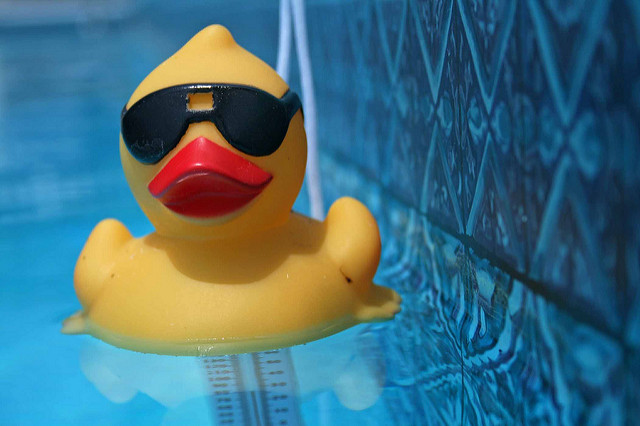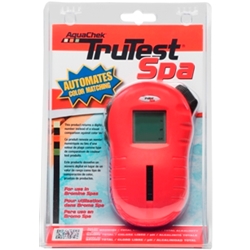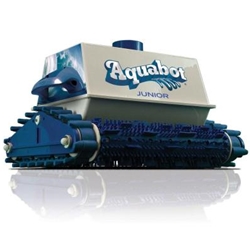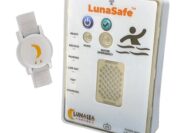Springtime pool opening can definitely be a DIY job. Not only will you save yourself hundreds of dollars by opening your pool yourself, your swimming season can begin earlier because you won’t be waiting on a busy pool service company to fit you in. You can open your pool as soon as you’re sure that the temperatures will stay above freezing. Many homeowners use Memorial Day weekend as the kickoff to their swimming season. Pool opening takes about two weeks from start to finish. Here’s a do-it-yourself guide on how to open your pool yourself.
Pool Opening in Ten Easy Steps
1) Drain water from the pool cover
If you have a solid pool cover, the first thing you need to do is to remove any standing water. A submersible pool cover pump will greatly speed up this process. If you have a mesh pool cover, skip this step.
2) Remove leaves and debris
Once the water is drained from the cover, clean off as much debris as you can using a brush, leaf net or blower. Your job will be a lot easier if you can keep this mess from falling into the pool when the cover is removed.
Note: Leave the pool cover on until after you have adjusted water level and chemistry.
3) Raise the water level
Most pools lose water during the winter. Using a garden hose, add enough water to bring the water level in the pool to its normal height.
4) Test the chemistry of your pool water
 Testing the chemistry of your pool water for pH, alkalinity, bromine and chlorine is an important step for a clean and safe swimming environment. Do-it-yourself pool and spa test kits that use test strips make water testing easy and accurate. Look for models with digital and automated color matching readouts for best results.
Testing the chemistry of your pool water for pH, alkalinity, bromine and chlorine is an important step for a clean and safe swimming environment. Do-it-yourself pool and spa test kits that use test strips make water testing easy and accurate. Look for models with digital and automated color matching readouts for best results.
Ideal levels should be: pH 7.2 to 7.6; total alkalinity 80 to 120 ppm (parts per million); bromine 2.0 to 6.0 ppm; chlorine 1.0 to 3.0 ppm; and calcium hardness from 150 to 250 ppm.
5) Adjust and balance chemicals
Based on the analysis you get back, you’ll need to add certain chemicals to adjust the water chemistry to ensure that its safe and comfortable for swimming. Chemicals can be purchased at swimming pool supply stores and many hardware or home and garden stores or online, including:
- Soda ash to increase pH:
- Muriatic acid or sodium bisulfate to decrease pH;
- Calcium chloride to adjust calcium hardness; and
- Cyanuric acid to inhibit the suns ability to burn off chlorine.
Be sure to run the circulation and filtration system continuously. Note that the filter should be cleaned daily and you may have to add more chlorine.
6) Remove the pool cover
The pool cover can be lifted when the water is clear. This is usually about a week after adding the chemicals. Once you can see the pool floor, carefully lift the pool cover off (best done with two people or more).Lay it somewhere flat and protected and brush off dust and debris. Allow the cover air dry and then sprinkle it with talcum powder to prevent mold and mildew buildup. Fold the cover loosely and store it in a dry place for the season.
7) Vacuum the pool
 After the pool cover is removed, its time to vacuum all the leaves and debris from the bottom. Consider investing in an automatic pool cleaner to eliminate the chore of manually vacuuming. These robotic cleaning machines roam the floor of the pool scrubbing and sucking up dirt and debris. Look for a self-contained models that don’t require a hose, booster pump or pool filter system connection.
After the pool cover is removed, its time to vacuum all the leaves and debris from the bottom. Consider investing in an automatic pool cleaner to eliminate the chore of manually vacuuming. These robotic cleaning machines roam the floor of the pool scrubbing and sucking up dirt and debris. Look for a self-contained models that don’t require a hose, booster pump or pool filter system connection.
8) Skim the pool’s surface
Use a long-handled pool skimmer net to remove floating bugs, leaves and twigs.
9) Inspect your pool’s safety equipment
 Check with your local building and code department to make sure you are in compliance with your municipality’s swimming pool safety laws. Many towns have swimming pool safety laws that require or recommend:
Check with your local building and code department to make sure you are in compliance with your municipality’s swimming pool safety laws. Many towns have swimming pool safety laws that require or recommend:
- A pool fence at least four feet high around pool and spa areas;
- A self-closing, self-latching gate with a pool gate alarm that which provides another layer of protection;
- Â pool alarm that sounds an alarm when a child, pet or non-swimmer falls or jumps into water;
- A pool surveillance camera to guard against trespassers or curious children and pets.
10) Ongoing maintenance
Once the pool opening job is complete, there are a few ongoing maintenance tasks you will need to address to keep your pool sparkling clean:
- Check and clean the filter;
- Vacuum the pool bottom at least once a week;
- Add water as needed using a garden hose or an automatic water pool leveler;
- Test the water chemistry every 2-3 days.
Summary
All of the steps in the pool opening process are necessary to ensure sparkling, clean pool water and a safe swimming environment. The good news is that it’s not that hard to open a pool yourself instead of paying and waiting on a pool service company. So keep an eye on the longterm forecast in your area, watch for when temperatures will stay above the freezing mark, and schedule your pool opening so you can be swimming before Memorial Day.





